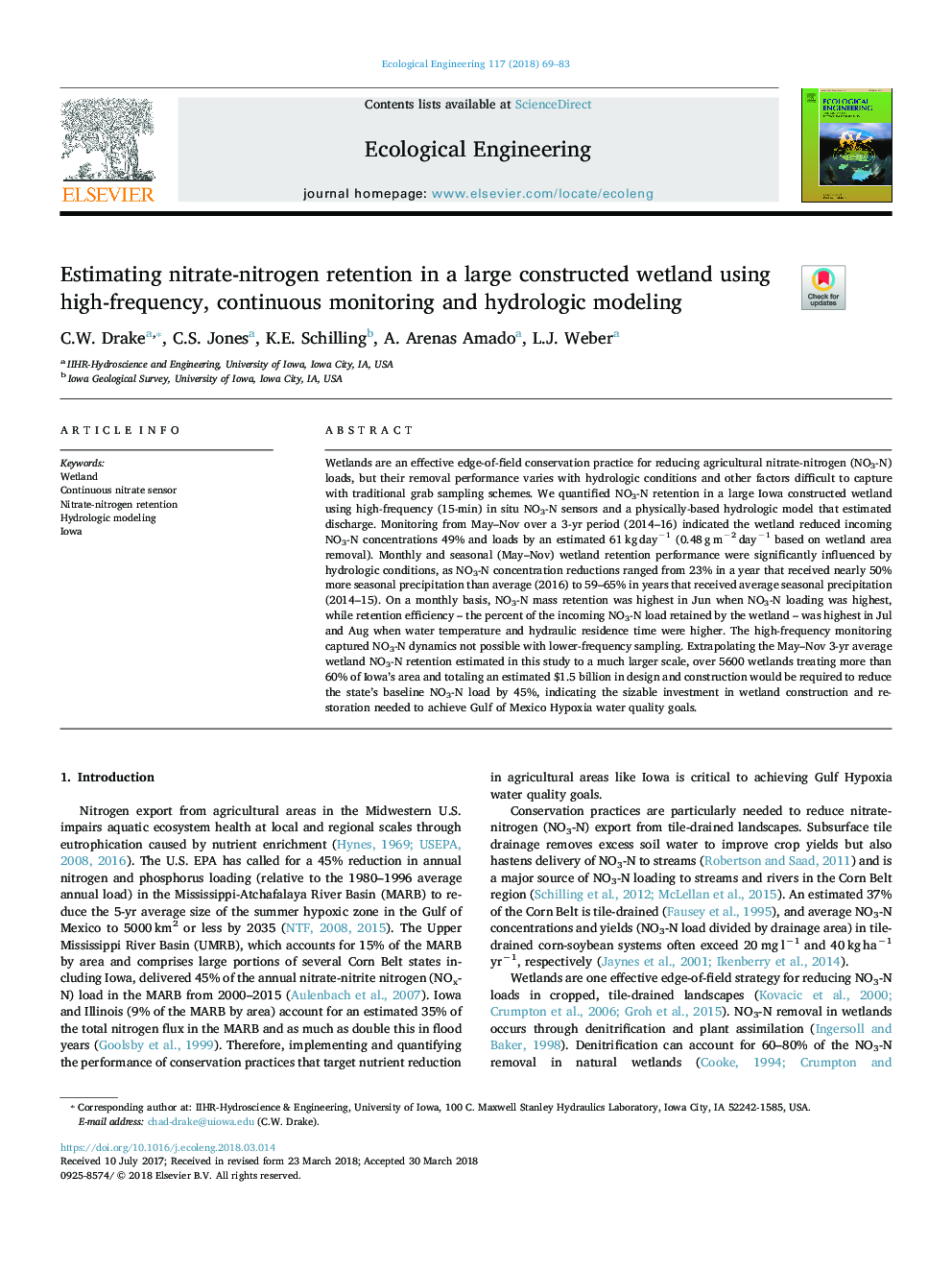| Article ID | Journal | Published Year | Pages | File Type |
|---|---|---|---|---|
| 8847872 | Ecological Engineering | 2018 | 15 Pages |
Abstract
Wetlands are an effective edge-of-field conservation practice for reducing agricultural nitrate-nitrogen (NO3-N) loads, but their removal performance varies with hydrologic conditions and other factors difficult to capture with traditional grab sampling schemes. We quantified NO3-N retention in a large Iowa constructed wetland using high-frequency (15-min) in situ NO3-N sensors and a physically-based hydrologic model that estimated discharge. Monitoring from May-Nov over a 3-yr period (2014-16) indicated the wetland reduced incoming NO3-N concentrations 49% and loads by an estimated 61â¯kgâ¯dayâ1 (0.48â¯gâ¯mâ2â¯dayâ1 based on wetland area removal). Monthly and seasonal (May-Nov) wetland retention performance were significantly influenced by hydrologic conditions, as NO3-N concentration reductions ranged from 23% in a year that received nearly 50% more seasonal precipitation than average (2016) to 59-65% in years that received average seasonal precipitation (2014-15). On a monthly basis, NO3-N mass retention was highest in Jun when NO3-N loading was highest, while retention efficiency - the percent of the incoming NO3-N load retained by the wetland - was highest in Jul and Aug when water temperature and hydraulic residence time were higher. The high-frequency monitoring captured NO3-N dynamics not possible with lower-frequency sampling. Extrapolating the May-Nov 3-yr average wetland NO3-N retention estimated in this study to a much larger scale, over 5600 wetlands treating more than 60% of Iowa's area and totaling an estimated $1.5 billion in design and construction would be required to reduce the state's baseline NO3-N load by 45%, indicating the sizable investment in wetland construction and restoration needed to achieve Gulf of Mexico Hypoxia water quality goals.
Keywords
Related Topics
Life Sciences
Agricultural and Biological Sciences
Ecology, Evolution, Behavior and Systematics
Authors
C.W. Drake, C.S. Jones, K.E. Schilling, A. Arenas Amado, L.J. Weber,
